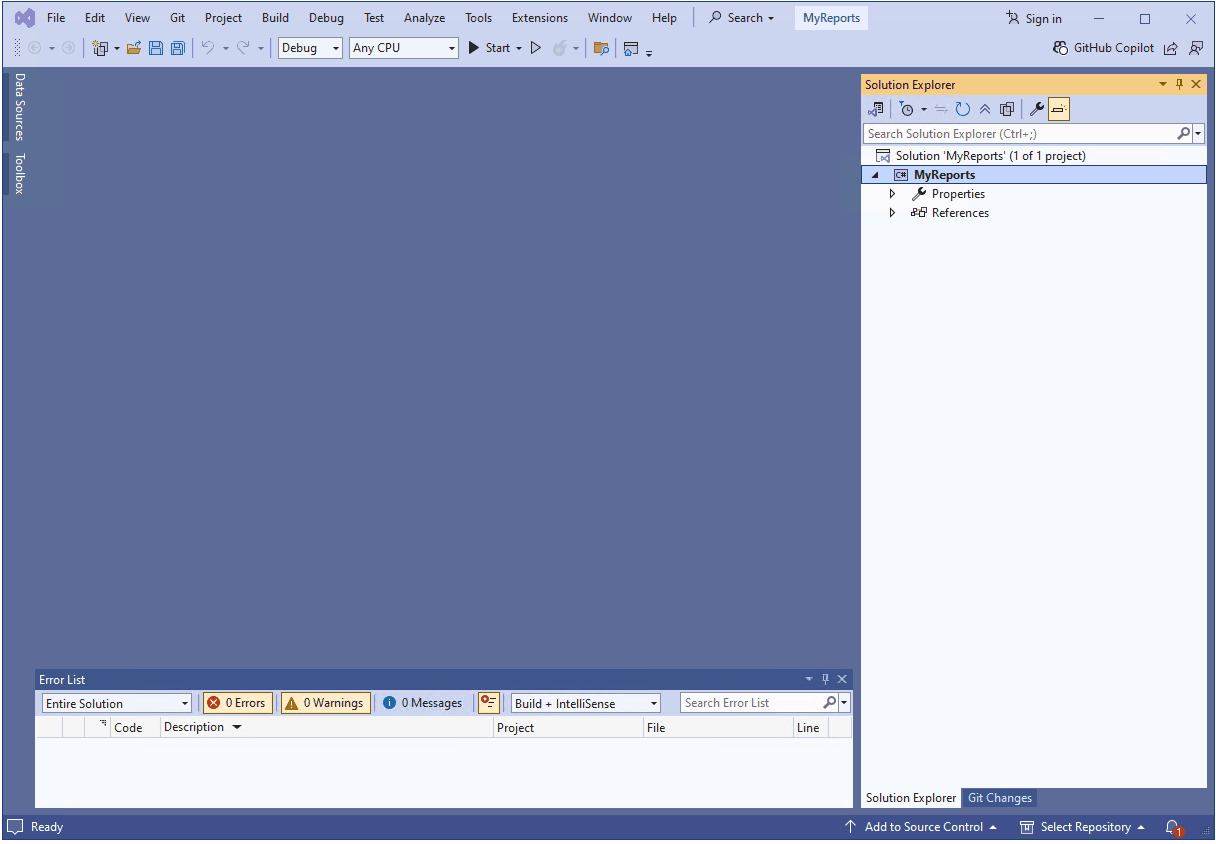Creating User Functions in Visual Studio Report Designer
Environment
| Version | Product | Author |
|---|---|---|
| Visual Studio Report Designer | Desislava Yordanova |
Description
This tutorial shows how to create and utilize custom user functions in the Visual Studio Report Designer.
Solution
Let's start with creating a Class library (.NET Framework) project and add a Report class using the Item Templates in Visual Studio.
User Functions Defined in the Report class
If your custom user function as a public static (Public Shared in VB.NET) method is a part of the current Report class:
public partial class Report1 : Telerik.Reporting.Report
{
public Report1()
{
InitializeComponent();
}
[Function(IsVisible = true, Category = "My Functions", Namespace = "My", Description = "Say Hi")]
public static string Greet(string name)
{
return string.Format("Hello, {0}", name);
}
}
It can be invoked from an expression by its name, specifying the necessary parameters in the braces, e.g., setting the Value of a TextBox to:
= Greet("Dess")

User Functions Defined in an External Assembly
-
If your custom user functions are linked from an external assembly (e.g., MyFunctions.dll), for the designer to recognize them, you will have to extend the configuration of the start application.
For the Visual Studio Report Designer, this is the 'devenv.exe.config' file that resides in 'C:\Program Files (x86)\Microsoft Visual Studio X.0\Common7\IDE' by default (it is recommended to create a backup copy before modifying it).
Do not forget to close the Visual Studio instance before modifying its configuration file. Run
Notepad(or other editing tool) as an administrator to perform the changes.<configSections> <section name="Telerik.Reporting" type="Telerik.Reporting.Configuration.ReportingConfigurationSection, Telerik.Reporting" allowLocation="true" allowDefinition="Everywhere"/> </configSections> <Telerik.Reporting> <AssemblyReferences> <add name="MyFunctions" /> </AssemblyReferences> </Telerik.Reporting> Copy the custom assembly in the same folder as the devenv.exe.config.
-
You can type the expression by specifying the full name of the function and passing a parameter of the expected type.
= MyFunctions.GetImageFromURL("image url")
The custom function accepts an image url and returns an Image object that can be assigned to a PictureBox:
